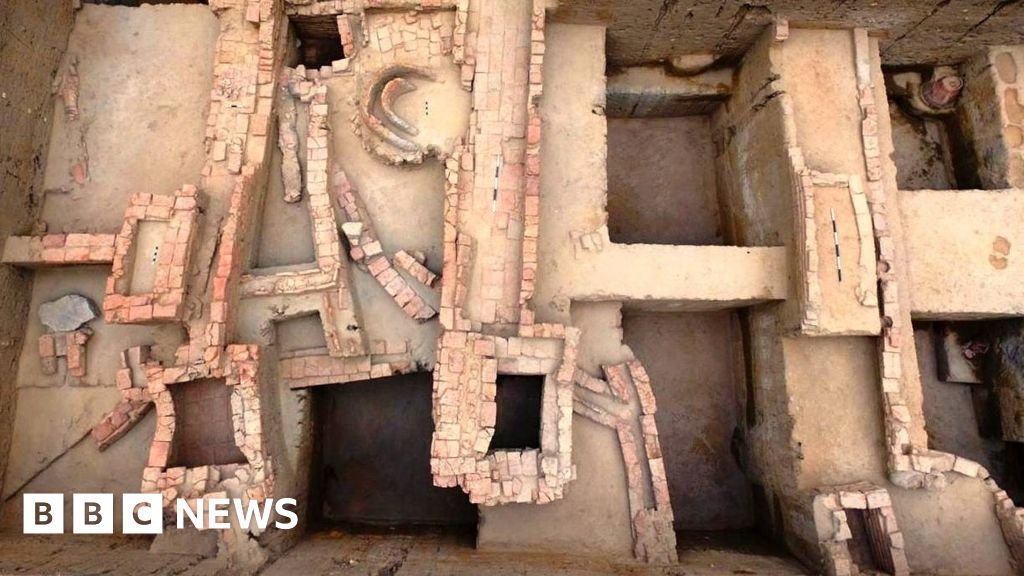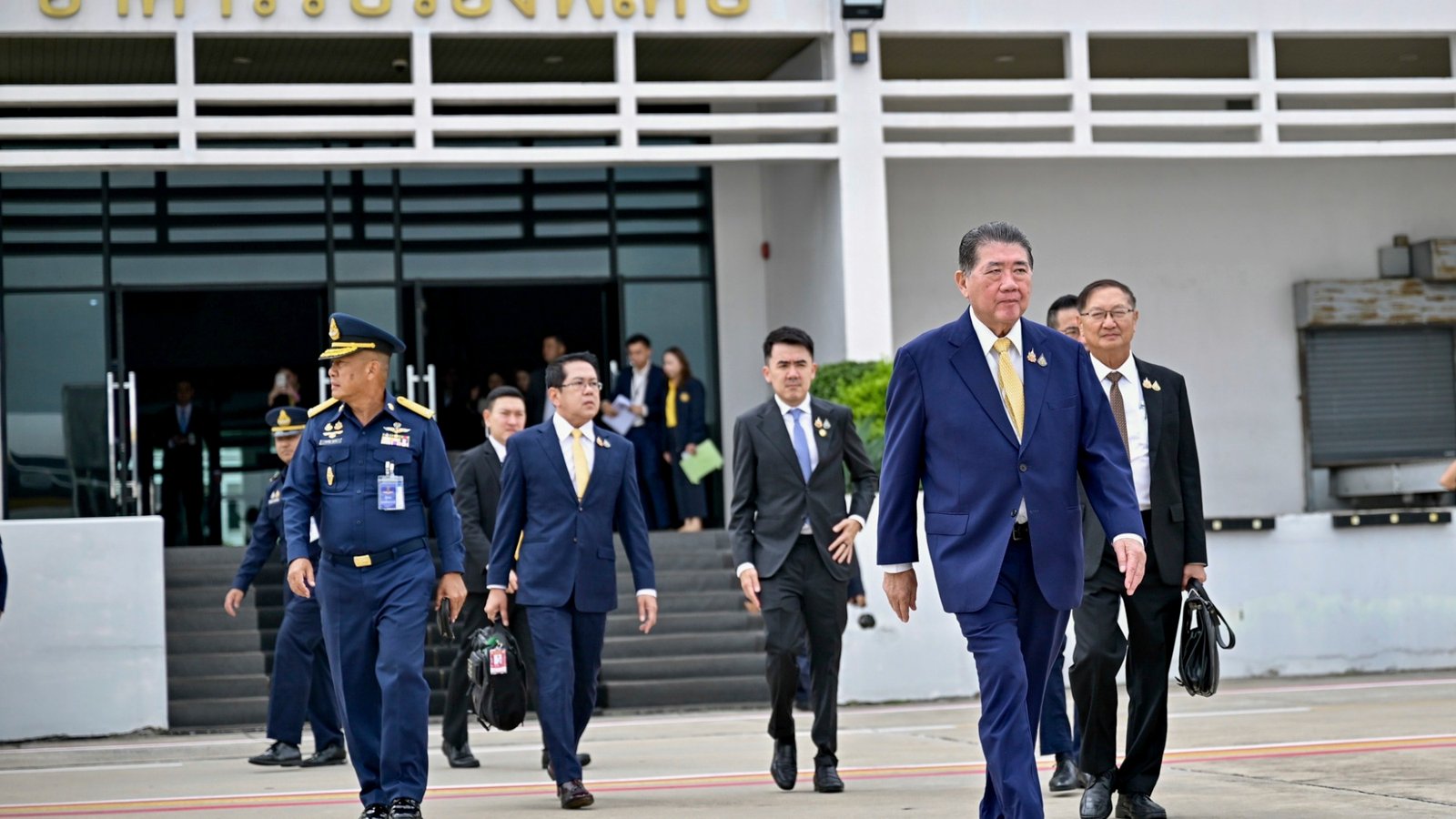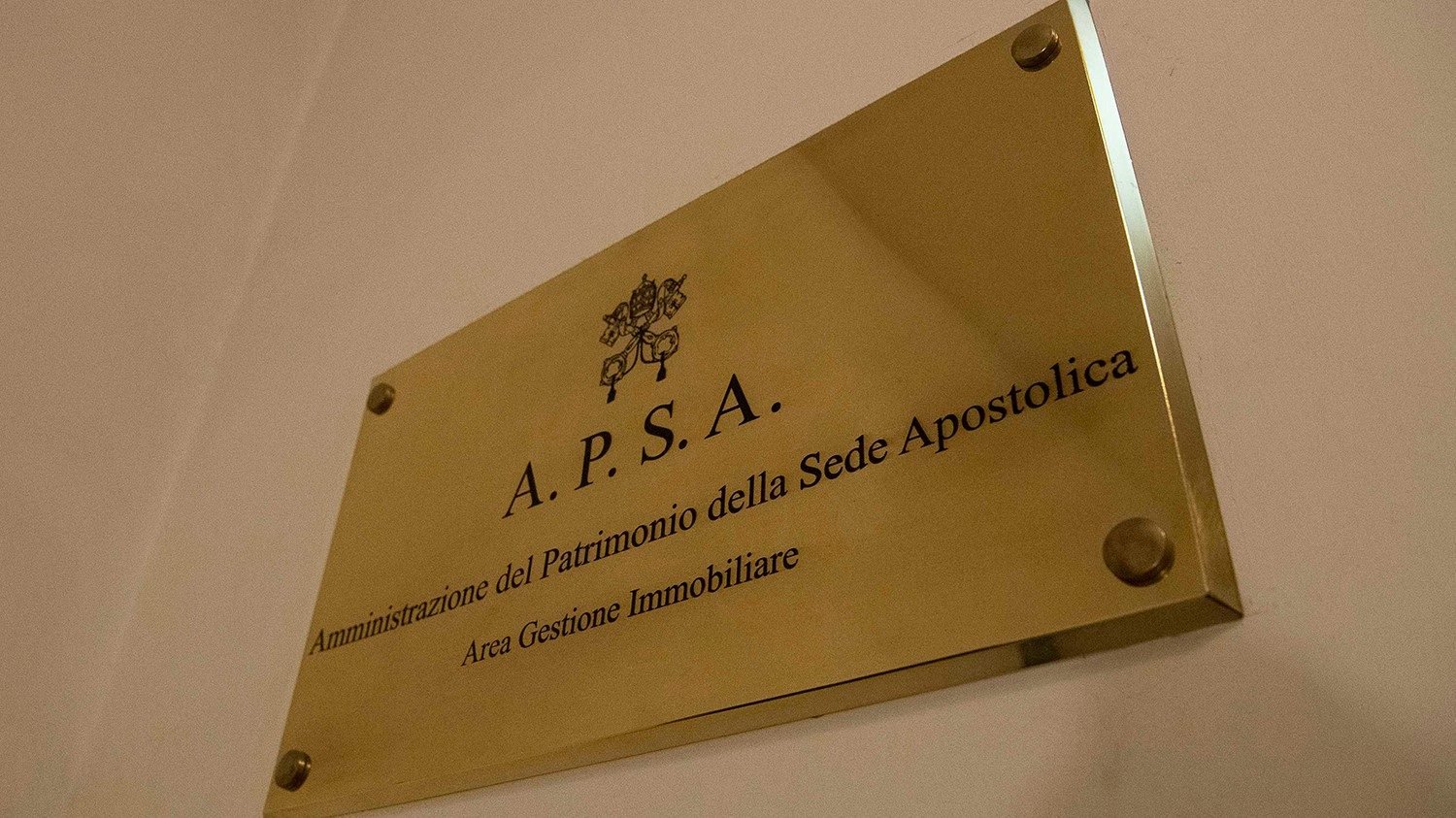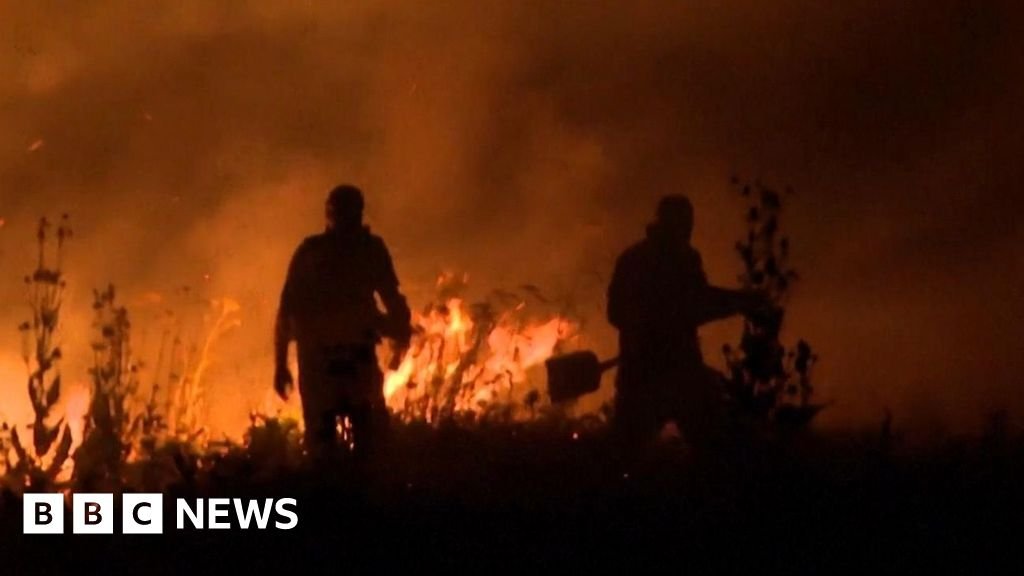BBC News
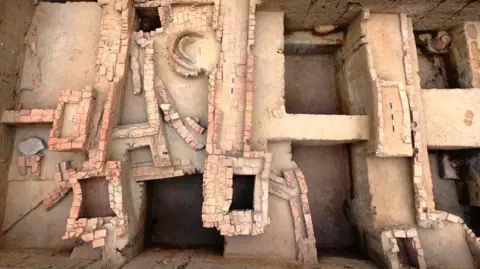 ASI
ASIThe Keeladi village in India’s southern Tamil Nadu state has unearthed archeological finds that have sparked a political and historical battle.
Amid coconut groves, a series of 15ft (4.5m) deep trenches reveal ancient artefacts buried in layers of soil – fragments of terracotta pots, and traces of long-lost brick structures.
Experts from the Tamil Nadu State Department of Archaeology estimate the artefacts to be 2,000 to 2,500 years old, with the oldest dating back to around 580 BCE. They say these findings challenge and reshape existing narratives about early civilisation in the Indian subcontinent.
With politicians, historians, and epigraphists weighing in, Keeladi has moved beyond archaeology, becoming a symbol of state pride and identity amid competing historical narratives.
Yet history enthusiasts say it remains one of modern India’s most compelling and accessible discoveries – offering a rare opportunity to deepen our understanding of a shared past.
Keeladi, a village 12km (7 miles) from Madurai on the banks of the Vaigai river, was one of 100 sites shortlisted for excavation by Archaeological Survey of India (ASI) archaeologist Amarnath Ramakrishnan in 2013.
He selected a 100-acre site there because of its proximity to ancient Madurai and the earlier discovery of red-and-black pottery ware by a schoolteacher in 1975.
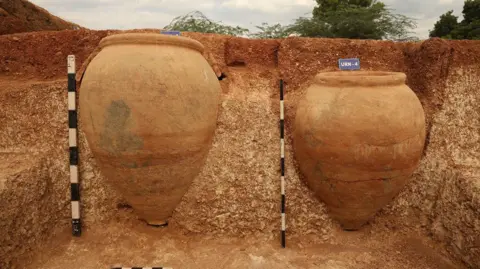 Tamil Nadu State Department of Archaeology
Tamil Nadu State Department of ArchaeologySince 2014, 10 excavation rounds at Keeladi have uncovered over 15,000 artefacts – burial urns, coins, beads, terracotta pipes and more – from just four of the 100 marked acres. Many are now displayed in a nearby museum.
Ajay Kumar, leading the state archaeology team at Keeladi, says the key finds are elaborate brick structures and water systems – evidence of a 2,500-year-old urban settlement.
“This was a literate, urban society where people had separate spaces for habitation, burial practices and industrial work,” Mr Kumar says, noting it’s the first large, well-defined ancient urban settlement found in southern India.
Since the Indus Valley Civilisation’s discovery in the early 1900s, most efforts to trace civilisation’s origins in the subcontinent have focused on northern and central India.
So, the Keeladi finds have sparked excitement across Tamil Nadu and beyond.
William Daniel, a teacher from neighbouring Kerala, said the discoveries made him feel proud about his heritage.
“It gives people from the south [of India] something to feel proud about, that our civilisation is just as ancient and important as the one in the north [of India],” he says.
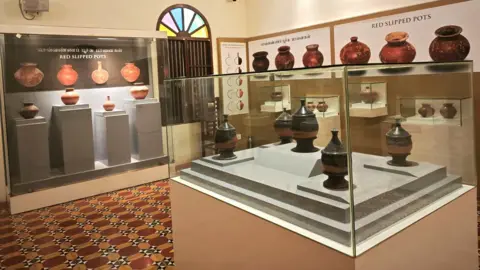
The politics surrounding Keeladi reflects a deep-rooted north-south divide – underscoring how understanding the present requires grappling with the past.
India’s first major civilisation – the Indus Valley – emerged in the north and central regions between 3300 and 1300 BCE. After its decline, a second urban phase, the Vedic period, rose in the Gangetic plains, lasting until the 6th Century BCE.
This phase saw major cities, powerful kingdoms and the rise of Vedic culture – a foundation for Hinduism. As a result, urbanisation in ancient India is often viewed as a northern phenomenon, with a dominant narrative that the northern Aryans “civilised” the Dravidian south.
This is especially evident in the mainstream understanding of the spread of literacy.
It is believed that the Ashokan Brahmi script – found on Mauryan king Ashoka’s rock edicts in northern and central India, dating back to the 3rd Century BCE – is the predecessor of most scripts in South and Southeast Asia.
Epigraphists like Iravatham Mahadevan and Y Subbarayalu have long held the view that the Tamil Brahmi script – the Tamil language spoken in Tamil Nadu and written in the Brahmi script – was an offshoot of the Ashokan Brahmi script.
But now, archaeologists from the Tamil Nadu state department say that the excavations at Keeladi are challenging this narrative.
“We have found graffiti in the Tamil Brahmi script dating back to the 6th Century BCE, which shows that it is older than the Ashokan Brahmi script. We believe that both scripts developed independently and, perhaps, emerged from the Indus Valley script,” Mr Kumar says.
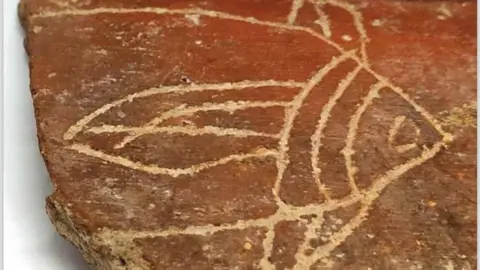 Keeladi Museum
Keeladi MuseumEpigraphist S Rajavelu, former professor of marine archaeology at the Tamil University, agrees with Mr Kumar and says other excavation sites in the state too have unearthed graffiti in the Tamil Brahmi script dating back to the 5th and 4th Century BCE.
But some experts say that more research and evidence are needed to conclusively prove the antiquity of the Tamil Brahmi script.
Another claim by the state department of archaeology that has ruffled feathers is that the graffiti found on artefacts in Keeladi is similar to that found in the Indus Valley sites.
“People from the Indus Valley may have migrated to the south, leading to a period of urbanisation taking place in Keeladi at the same time it was taking place in the Gangetic plains,” Mr Kumar says, adding that further excavations are needed to fully grasp the settlement’s scale.
But Ajit Kumar, a professor of archaeology at Nalanda University in Bihar, says that this wouldn’t have been possible.
“Considering the rudimentary state of travel back then, people from the Indus Valley would not have been able to migrate to the south in such large numbers to set up civilisation,” he says. He believes the finds in Keeladi can be likened to a small “settlement”.
 Keeladi Museum
Keeladi MuseumWhile archaeologists debate the findings, politicians are already drawing links between Keeladi and the Indus Valley – some even claim the two existed at the same time or that the Indus Valley was part of an early southern Indian, or Dravidian, civilisation.
The controversy over ASI archaeologist Mr Ramakrishnan’s transfer – who led the Keeladi excavations – has intensified the site’s political tensions.
In 2017, after two excavation rounds, the ASI transferred Mr Ramakrishnan, citing protocol. The Tamil Nadu government accused the federal agency of deliberately hindering the digs to undermine Tamil pride.
The ASI’s request in 2023 for Mr Ramakrishnan to revise his Keeladi report – citing a lack of scientific rigour – has intensified the controversy. He refused, insisting his findings followed standard archaeological methods.
In June, Tamil Nadu Chief Minister MK Stalin called the federal government’s refusal to publish Mr Ramakrishnan’s report an “onslaught on Tamil culture and pride”. State minister Thangam Thennarasu accused the Bharatiya Janata Party (BJP)-led federal government of deliberately suppressing information to erase Tamilian history.
India’s Culture Minister Gajendra Singh Shekhawat has now clarified that Mr Ramakrishnan’s report has not been rejected by the ASI but is “under review,” with expert feedback yet to be finalised.
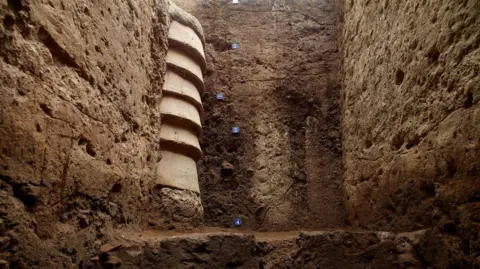 Tamil Nadu State Department of Archaeology
Tamil Nadu State Department of ArchaeologyBack at the the Keeladi museum, children explore exhibits during a school visit while construction continues outside to create an open-air museum at the excavation site.
Journalist Sowmiya Ashok, author of an upcoming book on Keeladi, recalls the thrill of her first visit.
“Uncovering history is a journey to better understand our shared past. Through small clues – like carnelian beads from the northwest or Roman copper coins – Keeladi reveals that our ancestors were far more connected than we realise,” she says.
“The divisions we see today are shaped more by the present than by history.”

